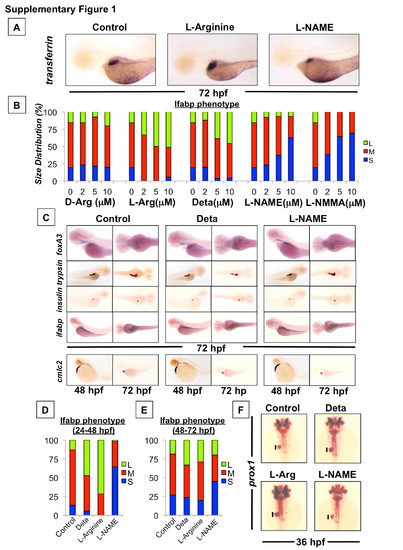Fig. S1
|
NO signaling regulates liver size during development in zebrafish. Effect of chemical modulators of NO signaling on liver formation as determined by in situ hybridization for the hepatocyte-specific gene transferrin. Representative photomicrographs were taken at 10x magnification. (B) Phenotypic analysis of liver size in embryos treated with different doses of alternate chemical modulators of NO signaling as determined by in situ hybridization for lfabp in treated embryos at 72 hpf (S=small, M=medium, L=large, N>50 embryos/treatment). (C) Effect of drug treatments on the development of other organ systems as determined by in situ hybridization for foxa3 (endoderm), trypsin (exocrine pancreas), insulin (endocrine pancreas), cmlc2 (heart) and ifabp (gut). Representative photomicrographs were taken at 10x magnification. (D and E) Phenotypic analysis of liver size in embryos treated with NO modulators from either 24-48 hpf or 48-72 hpf as determined by in situ hybridization for lfabp at 72 hpf (S=small, M=medium, L=large, N>50 embryos/treatment). (F) Effect of NO modulators (10 μM, 18-36 hpf) on hepatic progenitor cells as determined by in situ hybridization for prox1. Representative photomicrographs were taken at 10x magnification. |

